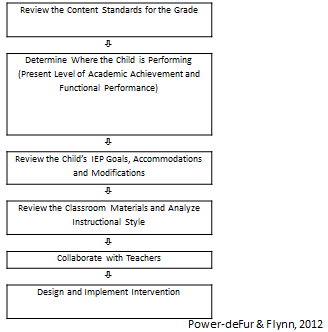Frequently Asked Questions Common Core State Standards
- Common Core State Standards
- Key Issues
- Implementation
- Advocacy
- Frequently Asked Questions
- Resources and References
- Can speech-language IEP goals be the same as Common Core State Standards goals?
- How can SLPs link intervention goals to CCSS when there are communication skills to address?
- What are some communication skills associated with the CCSS that are critical for students to perform successfully?
- What process would you use to align speech-language goals with the CCSS?
- Do states have speech-language pathology goals banks that are tied to the CCSS?
- Are there specific assessments that provide information on how a student is performing in relation to the CCSS?
Can speech-language IEP goals be the same as Common Core State Standards goals?
Speech-language goals should NOT be taken directly from the Common Core State Standards (CCSS), especially those CCSS goals that are specified for the grade level at which the child is currently performing. The CCSS are general educational standards for the grade level; therefore, their use by speech-language pathologists (SLPs) implies that the clients/students do not require special education. Individualized education program (IEP) goals should be written to accomplish the tasks that underlie achievement of the Standards.
For example, the goal of being able to sequence items may be required for a student to achieve a grade-level standard. The IEP should be written with the goal being “to achieve sequencing”—which will then enable the student to meet that standard at that grade level. SLPs operate in a developmental model; the SLP may need to first determine the level at which the student is performing and then identify skills appropriate for the student’s current level of learning. That level may be a year or two lower than the student’s current grade level.
How can SLPs link intervention goals to CCSS when there are communication skills to address?
Ehren et al. (2012) suggest that SLPs use either a standards-referenced approach or a standards-based approach to develop relevant goals and activities. In the standards-referenced approach, the SLP and team develop the goals and then identify the standards that best match the goals. In the standards-based model, the standard serves as the starting point for generating the goals and objectives.
What are some communication skills associated with the CCSS that are critical for students to perform successfully?
The English Language Arts standards present a logical starting point because they include reading, writing, speaking, and listening, and language; attaining related goals requires critical communication skills. To begin the process, SLPs can obtain a summary of the progression of expectations for the content areas from grade to grade and then determine the communication skills required to meet those expectations.
What process would you use to align speech-language goals with the CCSS?
The 6-step process below was developed by Power deFur and Flynn and described in their 2012 Perspectives on School Based Issues article, "Unpacking the Standards for Intervention."

Do states have speech-language pathology goals banks that are tied to the CCSS?
To date, ASHA is not aware of any state that has developed individualized education program (IEP) goals tied to the Common Core State Standards. The drawback to this approach is that it undermines individualization—a concept that reflects best practice and is expressed in the mandate for individualized instruction (i.e., the IEP).
Are there specific assessments that provide information on how a student is performing in relation to the CCSS?
At this time, there are no assessments that align exactly with the communication goals of the Common Core State Standards (CCSS). Some companies are in the development phase of this process. In addition, many new versions of tests are more educationally relevant and focus on communication skills found in the CCSS.
This section was adapted from:
Flynn, P., & Power deFur, L. (2012, July). Integrating common core standards into school-based treatment. Paper presented at Schools 2012, the annual ASHA conference on speech-language pathology in schools, Milwaukee, WI.
We gratefully acknowledge Lissa Power-deFur and Perry Flynn's contributions to the development of this webpage.









